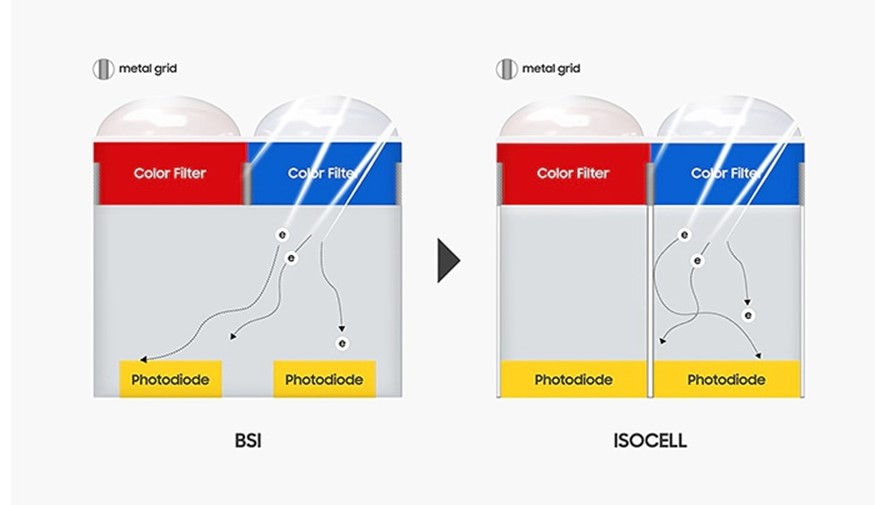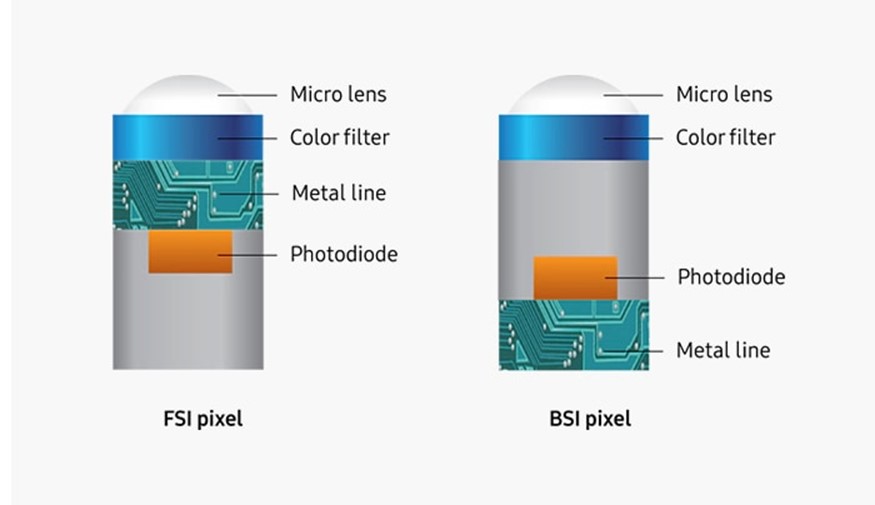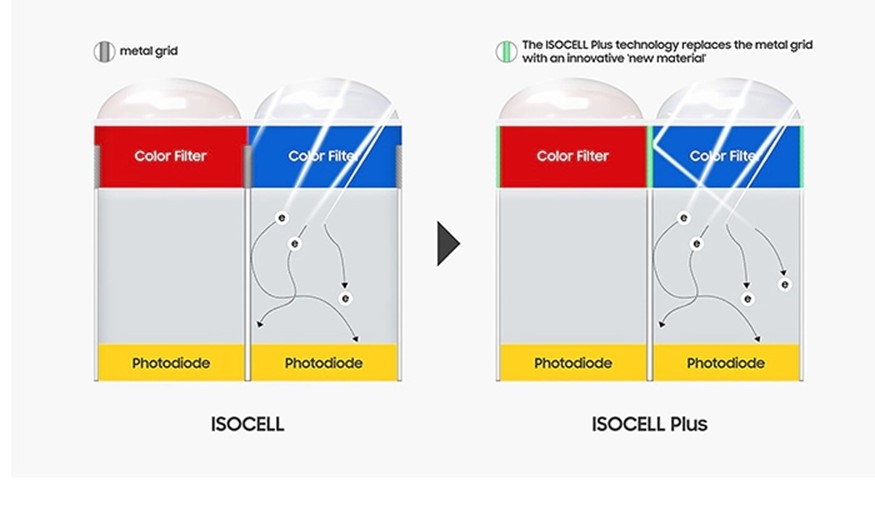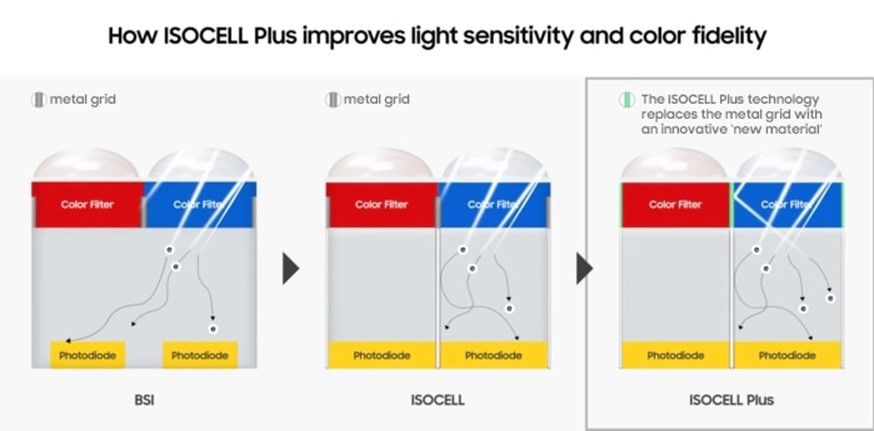The latest ISOCELL Plus camera sensors from Samsung are all set to convey enhanced color accuracy, light sensitivity, and added light gathering capacity in smartphone camera technology. These improvements result from replacing the metal barriers among pixels with walls prepared from a new material.
Also Read: Exhaustive List of Sony Exmor R, RS Sensors
Smartphone consumers can expect even more precise and clearer photos in dim light environments. CMOS image sensors will be implemented with the optimized pixel isolation technology to fetch these improvements.
In this context, Samsung states that the latest technology will lead to enhanced super-resolution mobile cameras. Although Samsung’s ISOCELL technology is a standard installation in smartphone sensors, it has announced the launch of its latest ISOCELL Plus technology. This technology guarantees enhanced color accuracy and light sensitivity from forthcoming smartphone cameras.
In the existing ISOCELL camera sensors, there is a physical metal barrier between pixels. The purpose of including this barrier is to decrease color cross-talk. However, the metal barrier poses a side-effect of reflecting or absorbing incoming light, which leads to reduced photo quality.
In the prevailing pixel structure, metal grids are created over the photodiodes to decrease interference between the pixels. This can also cause some optical loss as metals reflect and/or absorb the entering light. With the launch of the ISOCELL Plus, Samsung elevates the pixel isolation technology to a new level via optimized pixel architecture.

Essentially, the ISOCELL Plus technology substitutes that metal barrier with a fresh material developed by Fujifilm. This improves the photo quality by decreasing absorption/reflection and optical loss. Explicitly, Samsung claims a 15%improvement in light sensitivity and a boost in color fidelity.
To capture high-quality photographs, CMOS image sensors must hold maximum light as possible and then transmit the accurate color information to the photodiode. These requirements were solved by the launch of Samsung’s ISOCELL technology in 2013.

The formation of the physical barrier between adjacent pixels enables every pixel to absorb and retain more light than the traditional backside-illuminated (BSI) image sensor design for outstanding image quality.
The latest ISOCELL Plus Technology will benefit from higher resolution cameras:

ISOCELL Plus sensors will also be beneficial for higher resolution cameras. The company stated that the technology would permit 0.8 micron and smaller pixels. Therefore, it makes it perfect for super-resolution cameras with a resolution of more than 20 MP.
Most high-resolution smartphone cameras usually excel during the day but show poor performance at night. A large image sensor facilitates better night-time snaps (raising the phone’s thickness), pixel-binning (presenting brighter but lower-resolution snaps), or a dual-camera setup. But the Samsung’s latest ISOCELL Plus technology unlocks the door for another solution without compromising resolution or size.
This light-boosting technology can also benefit telephoto cameras, which usually depict poor performance in low light owing to their smaller apertures. Perhaps, it won’t present an extraordinary improvement in output quality at night. However, it can still be considered an improvement over existing telephoto zoom cameras.
In the context of this technology, Yanagihara, corporate vice president of Fujifilm, stated that they value their strategic relationship with Samsung. He added that this development is a noteworthy milestone for them because it records the first commercialization of their new material. He also stated that through constant cooperation with Samsung, Fujifilm expects to present more significant innovations to mobile cameras.

Ben K. Hur, the vice president of System LSI marketing at Samsung Electronics, said that with this collaboration with Fujifilm, an industry frontrunner in imaging and information technology, Samsung had elevated the boundaries of CMOS image sensor technology.
He added that the ISOCELL Plus technology would facilitate the development of ultra-high-resolution sensors with extraordinarily small pixel dimensions and convey performance advancements for the sensors with more significant pixel designs.
Samsung is exhibiting the tech at Mobile World Congress Shanghai (scheduled to conduct from June 27 to June 29). However, it hasn’t been declared when the first phones with ISOCELL Plus sensors will release. It is expected that we will soon have phones with this technology.

